Have you ever found yourself wishing you had a whole big bunch of fancy-schmancy letter or number manipulatives to help your struggling learner? Well, don’t move, because you’re about to learn how to make them inexpensively for yourself!
A child who has difficulty learning letters or phonics patterns, identifying syllables, spelling words, or reading will usually benefit from using letter manipulatives, something he can move around and re-position himself. The struggling student might be any age, so using letter tiles is helpful for older students who already know the letters but struggle in spelling or syllable divisions.
Number manipulatives are helpful for the student who struggles with math, as are extra tiles with math operation symbols, to use them in building and solving equations. It’s one thing to use math cubes to illustrate 3 + 2 = 5, but it’s another thing entirely to use number tiles to solve 3 + 2 = 4 + y.
It’s fairly easy to cut out letter or number shapes by enlarging a simple font to super-size status, about 3″ tall (or around 350 points) on your computer’s word processor. Experiment to find a font you like, enlarge the letters or numbers, then print them on cardstock and cut out. These shapes can also be used as templates for making cut-out letters or numbers from materials that can’t be put through a computer printer, or to get more letters or numbers from a single sheet of paper.
Squares or rectangles can be turned into cards or tiles by writing the letters or numbers on them with a Sharpie marker. I have used cardstock, sandpaper, and cereal box cardboard for these with great success. The sandpaper adds a nice tactile element for kids whose learning styles appreciate more texture. I have varied the sizes, depending on the age of the kids using them and the application they will fulfill — 6″ squares are great for matching games on the floor, but 1″ squares work great as tabletop tiles for spelling practice. We had a few hundred small letter tiles made from cardstock, which were great for building a list of spelling words.
For students who are just learning their letters, I highly recommend starting with upper case letters first, then once the student knows them without mistakes, introducing the lower case letters as the “little brothers” of the upper case. This results in less confusion and fewer possibilities for reversals.
These cut-out letter shapes are wonderful tools for teaching and learning recognition, matching, phonics, spelling, syllables, and so on, whether by themselves or in combination with cards, tiles, and a variety of sizes and font styles (especially helpful for learning to recognize all the different appearances letters can have). You could even make some in the exact same size and shape as the letter tiles from a Scrabble or Bananagrams game and combine them all for even more learning fun!
I have made letter and number shapes and cards from these materials:
- Sandpaper (fine to medium texture works best)
- Craft foam
- Textured fabrics (corduroy, vinyl, fleece, denim, etc.)
- Cardboard (including cereal boxes), poster board, etc.
- Cardstock
- Textured scrapbooking paper
Bonus Tips:
- Sometimes I needed to glue an identical shape of cardstock or cardboard to the backs of some flimsy materials for stability and durability, especially with cloth or thin paper.
- Wood or foam cut-outs can sometimes be found with craft supplies for a quicker start.
- It can also be helpful to decorate the front side and/or bottom edge of letters and numbers to help kids learn to orient them correctly (even a line drawn with a marker can be enough to discern top from bottom or front from back).
Letter Activities:
- Matching — sort lots of different letter shapes, tiles, and cards into separate piles for each letter. Alphabetizing — mix up one set of letters (A-Z) and put them into alphabetical order.
- Phonics Practice — use letters to make short words (2-3 letters) and practice reading their sounds in order to read the words. Change one consonant and read again; repeat. Ditto for changing the vowel. Repeat for longer words as skills increase.
- Spelling practice — use your supply of letter manipulatives to build spelling or vocabulary words. Add as many words as possible that use the same phonics patterns.
- Syllables — build a vocabulary word, then scoot the letters apart to divide the word into its proper syllables. Compare to the dictionary entry to self-check.
Number Activities:
- Matching — sort lots of different number shapes, tiles, and cards into separate piles for each number.
- Numerical order — mix up a set of numbers (0-9 or 1-10) and put them into numerical order.
- Number value — match the appropriate number shapes, tiles, and cards with the dots on dice or dominoes.
- Double-digit numbers — combine digits to make teens, twenties, etc. and practice reading them. Ditto for three-digit numbers and beyond.
- Arithmetic practice — build arithmetic problems using the number shapes, tiles, cards, and operation symbols, and put the correct numbers in place for the answers.
- More operations — be sure to make some commas, decimal points, fraction bars, dollar & cent signs, percent signs, and anything else your student will encounter in his math lessons.
For more activity ideas, see also (in any order):
Building Blocks for Success in Spelling
Building Blocks for Success in Math

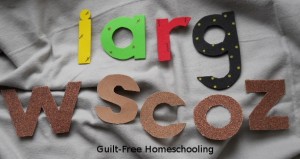
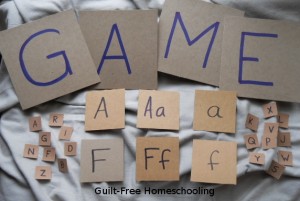
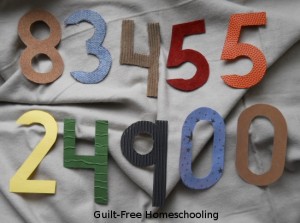
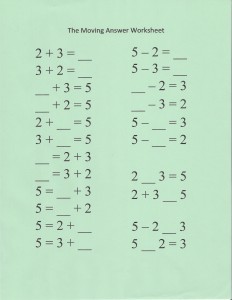
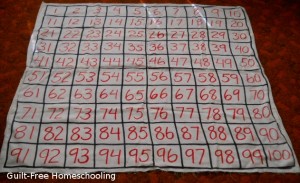
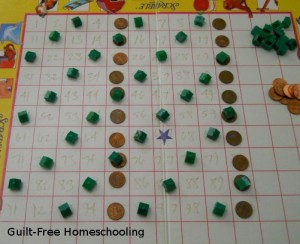
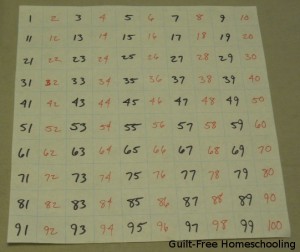
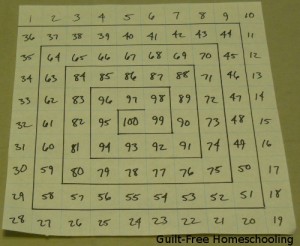
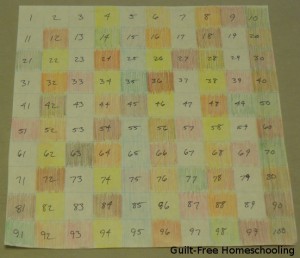

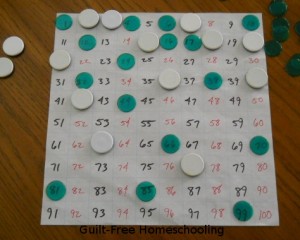
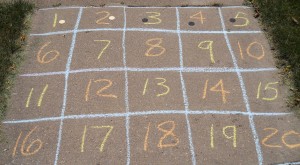

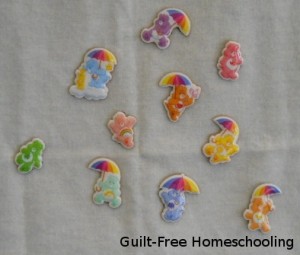
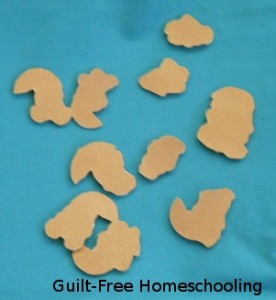


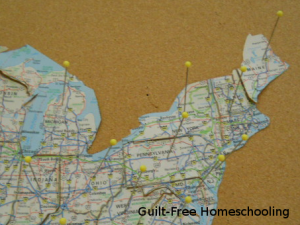

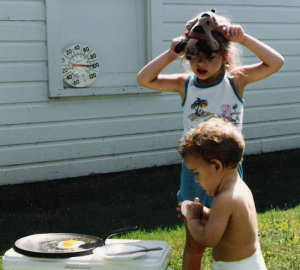
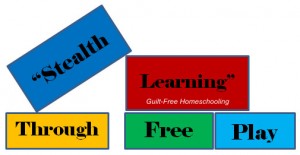
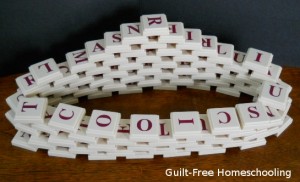
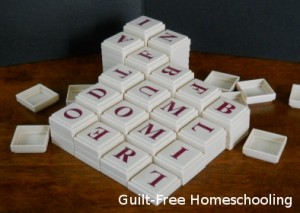
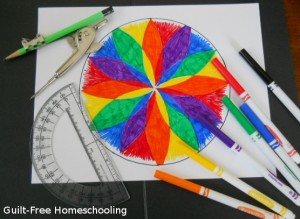
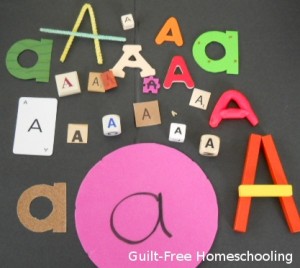
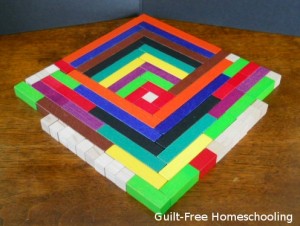


 Guilt-Free Homeschooling is the creation of Carolyn Morrison and her daughter, Jennifer Leonhard. After serious disappointments with public school, Carolyn spent the next 11 years homeschooling her two children, from elementary to high school graduation and college admission. Refusing to force new homeschooling families to re-invent the wheel, Carolyn and Jennifer now share their encouragement, support, tips, and tricks, filling their blog with "all the answers we were looking for as a new-to-homeschooling family" and making this website a valuable resource for parents, not just a daily journal. Guilt-Free Homeschooling -- Equipping Parents for Homeschooling Success!
Guilt-Free Homeschooling is the creation of Carolyn Morrison and her daughter, Jennifer Leonhard. After serious disappointments with public school, Carolyn spent the next 11 years homeschooling her two children, from elementary to high school graduation and college admission. Refusing to force new homeschooling families to re-invent the wheel, Carolyn and Jennifer now share their encouragement, support, tips, and tricks, filling their blog with "all the answers we were looking for as a new-to-homeschooling family" and making this website a valuable resource for parents, not just a daily journal. Guilt-Free Homeschooling -- Equipping Parents for Homeschooling Success!

Recent Comments